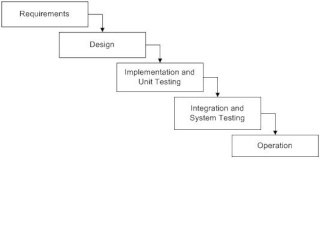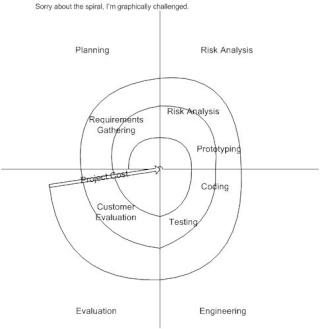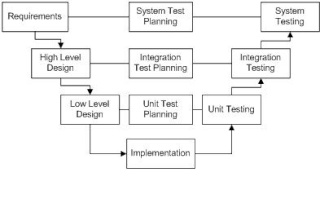Identify and discuss the steps for “critical success factors” approach? (At least 1500 words)
Before identifying the steps for critical success factors approach, let me define first what critical success factors are. After surfing the internet, I have found various definitions about critical success factors. Reading different explanations and uses of Critical Success factors from different resources from the internet confuse me a bit. But I found some that would be reliable enough.
Critical Success Factors (CSFs) are the critical factors or activities required for ensuring the success your business. The term was initially used in the world of data analysis and business analysis. Critical Success Factors have been used significantly to present or identify a few key factors that organization should focus on to be successful. Critical Success Factors, as a definition, refer to “the limited number of areas in which satisfactory results will ensure successful competitive performance for the individual, department, or organization”. Critical Success Factor is an element of organizational activity which is central to its future success. It may change over time, and may include items such as product quality, employee attitudes, manufacturing flexibility, and brand awareness. It is considered as any of the aspects of a business that are identified as vital for successful targets to be reached and maintained. These are normally identified in such areas as product processes, employee and organizational skills, functions, techniques, and technologies. It is a business term for an ingredient which is essential for a firm or project to achieve its mission. Critical Success Factors, according to Laudon &Laudon MIS (7th edition, page 10.1), are small number and easily identifiable operational goals, shaped by industry, manager, and environment, believed to assure firm’s success, and used to determine organizations requirements.
It is important in an organization to identify its Critical Success Factors because it allows firms to focus their efforts on building their capabilities to meet the recognized CSFs. It even permits organizations to make a decision if they have the capability to create the requirements needed to meet its Critical Success Factors. Whatever definition you would rely, it is important that you will always make sure that all the managers of the organization understand the definition.
Types of Critical Success Factor
There are four basic types of CSFs. They are: Industry, Strategy, Environmental and Temporal.
Industry CSF’s – resulting from specific industry characteristics
Strategy CSF’s – resulting from the chosen competitive strategy of the business
Environmental CSF’s – resulting from economic or technological changes
Temporal CSF’s – results from internal organizational needs and changes.
The following that was mentioned above are also considered as the main aspects of Critical Success Factors that was based on Rockart and Bullen’s idea. In the industry, some CSF’s are common to all companies within the same industry. Every industry defines its own CSF. The truth is that each organization has its own unique goals though there may be some standards but not all organizations will have duplicate CSF’s. Organizations have its own adopted strategy to gain market share. The quality of position in the marketplace will be bases to CSF. The organization’s strategy, resources and capabilities will classify its CSF’s. The value of organization in the market is a great impact on CSF at a given point in time.
In writing a Critical Success Factors, there are some premises that would be a great help. These principles are based on what my resources had given. This will simply serve as your guidelines in writing down the critical success factors that you have observed.
• Ensure a good understanding of the environment, the industry and the company – It has been shown that CSF's have five primary sources, and it is important to have a good understanding of the environment, the industry and the company in order to be able to write them well. These factors are customized for companies and individuals and the customization results from the uniqueness of the organization.
• Build knowledge of competitors in the industry – While this principle can be encompassed in the previous one, it is worth highlighting separately as it is critical to have a good understanding of competitors as well in identifying an organization's CSF's Knowing where competitors are positioned, what their resources and capabilities are, and what strategies they will pursue can have an impact on an organization's strategy and also resulting CSF's
• Develop CSF's which result in observable differences – A key impetus for the development of CSF's was the notion that factors which get measured are more likely to be achieved versus factors which are not measured. Thus, it is important to write CSF's which are observable or possibly measurable in certain respects such that it would be easier to focus on these factors. These don't have to be factors that are measured quantitatively as this would mimic key performance indicators; however, writing CSF's in observable terms would be helpful.
• Develop CSF's that have a large impact on an organization's performance – By definition, CSF's are the "most critical" factors for organizations or individuals. However, due care should be exercised in identifying them due to the largely qualitative approach to identification, leaving many possible options for the factors and potentially results in discussions and debate. In order to truly have the impact as envisioned when CSF's were developed, it is important to thus identify the actual CSF's, i.e. the ones which would have the largest impact on an organization's (or individual's) performance.
What are the Steps for critical success factor approach?
Based on what I have understood and read, I come up with some steps for critical success factors. These are the following steps.
1. Start with a vision and a mission statement.
2. Develop a high level and hierarchy of goals and their success factors
3. List of requirements, problems, and assumptions.
4. Analysis Matrices
5. Solid usage scenarios.
6. Result of the analysis
Start with a vision and a mission statement. Every organization has its own unique vision and mission that they want to follow. It is important to know what are the firm’s vision and mission before you can start pointing out the firm’s critical success factor.
Develop high level and hierarchy of goals and their success factors. It is always good to know the goals of the organization since critical success factor is a step in ensuring the organizations success. With critical success factor, you are focusing on what the company aims in the future and if the firm is able to achieve those goals and dreams that was already a success.
List of requirements, problems, and assumptions. It is necessary to gather all the data and information with regards to the organization, site all the problems that the organization are facing or might be facing in the future, and identify the following assumptions on how to the company will get over with those problems.
Analysis matrices. Part of these analysis matrices is the problem versus requirements matrix and the usage scenarios versus requirements matrix. You have to know if all the requirements you have gathered are consistent enough. Analyze if the requirements are completed and appropriate. Analyze the problems and set some solutions on how to solve those problems. Examine if the needs of the company has been cope up. And evaluate how the company gain success would in the future.
Solid Usage Scenarios. Usage scenarios or in other words “use cases” which is very much familiar when using unified modeling language. This provides an idea on determining if the requirements are aligned and self-consistent, if the needs of the user being met as well as those of the enterprise, and if the requirements are complete.
Result of the Analysis. After having a couple of analysis, you can now list what are the things that can be considered as critical for the success of the organization. You will know the factors that would benefit and affect for the success of the firm.
Every firm has its own critical success factors. It depends on their strategy on how they can obtain success. Example of a critical success on an organization are the training and education, quality data and reporting, management commitment, customer satisfaction, staff orientation, role of the quality department, communication to improve quality, and continuous improvement. There may be several of critical success factors but it is necessary that you have to make sure that it is in line with the organizations vision, mission and goals. If the organization has achieved its goals, you can already declare that the organization has succeeded. In some cases, companies want to complete a project successfully that could be a big benefit for the company’s success. As what I have read, there has been a research that shows that there are critical success factors that should be applied to complete a project successfully. This includes the following: Match changes to vision, Define crisp deliverables, Business need linked to vision, have a formal process to define vision, and organizational culture supports project management. Critical Success factor is necessary for an organization in order to fulfill its mission. Without critical success factor, it will definitely cause organizational and/or mission failure. No one wants an organization to fail, everyone aims to succeed.
References:
http://rapidbi.com/created/criticalsuccessfactors.html
Laudon & Laudon MIS, 7th Edition. Pg. 10.4
Before identifying the steps for critical success factors approach, let me define first what critical success factors are. After surfing the internet, I have found various definitions about critical success factors. Reading different explanations and uses of Critical Success factors from different resources from the internet confuse me a bit. But I found some that would be reliable enough.
Critical Success Factors (CSFs) are the critical factors or activities required for ensuring the success your business. The term was initially used in the world of data analysis and business analysis. Critical Success Factors have been used significantly to present or identify a few key factors that organization should focus on to be successful. Critical Success Factors, as a definition, refer to “the limited number of areas in which satisfactory results will ensure successful competitive performance for the individual, department, or organization”. Critical Success Factor is an element of organizational activity which is central to its future success. It may change over time, and may include items such as product quality, employee attitudes, manufacturing flexibility, and brand awareness. It is considered as any of the aspects of a business that are identified as vital for successful targets to be reached and maintained. These are normally identified in such areas as product processes, employee and organizational skills, functions, techniques, and technologies. It is a business term for an ingredient which is essential for a firm or project to achieve its mission. Critical Success Factors, according to Laudon &Laudon MIS (7th edition, page 10.1), are small number and easily identifiable operational goals, shaped by industry, manager, and environment, believed to assure firm’s success, and used to determine organizations requirements.
It is important in an organization to identify its Critical Success Factors because it allows firms to focus their efforts on building their capabilities to meet the recognized CSFs. It even permits organizations to make a decision if they have the capability to create the requirements needed to meet its Critical Success Factors. Whatever definition you would rely, it is important that you will always make sure that all the managers of the organization understand the definition.
Types of Critical Success Factor
There are four basic types of CSFs. They are: Industry, Strategy, Environmental and Temporal.
Industry CSF’s – resulting from specific industry characteristics
Strategy CSF’s – resulting from the chosen competitive strategy of the business
Environmental CSF’s – resulting from economic or technological changes
Temporal CSF’s – results from internal organizational needs and changes.
The following that was mentioned above are also considered as the main aspects of Critical Success Factors that was based on Rockart and Bullen’s idea. In the industry, some CSF’s are common to all companies within the same industry. Every industry defines its own CSF. The truth is that each organization has its own unique goals though there may be some standards but not all organizations will have duplicate CSF’s. Organizations have its own adopted strategy to gain market share. The quality of position in the marketplace will be bases to CSF. The organization’s strategy, resources and capabilities will classify its CSF’s. The value of organization in the market is a great impact on CSF at a given point in time.
In writing a Critical Success Factors, there are some premises that would be a great help. These principles are based on what my resources had given. This will simply serve as your guidelines in writing down the critical success factors that you have observed.
• Ensure a good understanding of the environment, the industry and the company – It has been shown that CSF's have five primary sources, and it is important to have a good understanding of the environment, the industry and the company in order to be able to write them well. These factors are customized for companies and individuals and the customization results from the uniqueness of the organization.
• Build knowledge of competitors in the industry – While this principle can be encompassed in the previous one, it is worth highlighting separately as it is critical to have a good understanding of competitors as well in identifying an organization's CSF's Knowing where competitors are positioned, what their resources and capabilities are, and what strategies they will pursue can have an impact on an organization's strategy and also resulting CSF's
• Develop CSF's which result in observable differences – A key impetus for the development of CSF's was the notion that factors which get measured are more likely to be achieved versus factors which are not measured. Thus, it is important to write CSF's which are observable or possibly measurable in certain respects such that it would be easier to focus on these factors. These don't have to be factors that are measured quantitatively as this would mimic key performance indicators; however, writing CSF's in observable terms would be helpful.
• Develop CSF's that have a large impact on an organization's performance – By definition, CSF's are the "most critical" factors for organizations or individuals. However, due care should be exercised in identifying them due to the largely qualitative approach to identification, leaving many possible options for the factors and potentially results in discussions and debate. In order to truly have the impact as envisioned when CSF's were developed, it is important to thus identify the actual CSF's, i.e. the ones which would have the largest impact on an organization's (or individual's) performance.
What are the Steps for critical success factor approach?
Based on what I have understood and read, I come up with some steps for critical success factors. These are the following steps.
1. Start with a vision and a mission statement.
2. Develop a high level and hierarchy of goals and their success factors
3. List of requirements, problems, and assumptions.
4. Analysis Matrices
5. Solid usage scenarios.
6. Result of the analysis
Start with a vision and a mission statement. Every organization has its own unique vision and mission that they want to follow. It is important to know what are the firm’s vision and mission before you can start pointing out the firm’s critical success factor.
Develop high level and hierarchy of goals and their success factors. It is always good to know the goals of the organization since critical success factor is a step in ensuring the organizations success. With critical success factor, you are focusing on what the company aims in the future and if the firm is able to achieve those goals and dreams that was already a success.
List of requirements, problems, and assumptions. It is necessary to gather all the data and information with regards to the organization, site all the problems that the organization are facing or might be facing in the future, and identify the following assumptions on how to the company will get over with those problems.
Analysis matrices. Part of these analysis matrices is the problem versus requirements matrix and the usage scenarios versus requirements matrix. You have to know if all the requirements you have gathered are consistent enough. Analyze if the requirements are completed and appropriate. Analyze the problems and set some solutions on how to solve those problems. Examine if the needs of the company has been cope up. And evaluate how the company gain success would in the future.
Solid Usage Scenarios. Usage scenarios or in other words “use cases” which is very much familiar when using unified modeling language. This provides an idea on determining if the requirements are aligned and self-consistent, if the needs of the user being met as well as those of the enterprise, and if the requirements are complete.
Result of the Analysis. After having a couple of analysis, you can now list what are the things that can be considered as critical for the success of the organization. You will know the factors that would benefit and affect for the success of the firm.
Every firm has its own critical success factors. It depends on their strategy on how they can obtain success. Example of a critical success on an organization are the training and education, quality data and reporting, management commitment, customer satisfaction, staff orientation, role of the quality department, communication to improve quality, and continuous improvement. There may be several of critical success factors but it is necessary that you have to make sure that it is in line with the organizations vision, mission and goals. If the organization has achieved its goals, you can already declare that the organization has succeeded. In some cases, companies want to complete a project successfully that could be a big benefit for the company’s success. As what I have read, there has been a research that shows that there are critical success factors that should be applied to complete a project successfully. This includes the following: Match changes to vision, Define crisp deliverables, Business need linked to vision, have a formal process to define vision, and organizational culture supports project management. Critical Success factor is necessary for an organization in order to fulfill its mission. Without critical success factor, it will definitely cause organizational and/or mission failure. No one wants an organization to fail, everyone aims to succeed.
References:
http://rapidbi.com/created/criticalsuccessfactors.html
Laudon & Laudon MIS, 7th Edition. Pg. 10.4

 Posted by
Posted by













